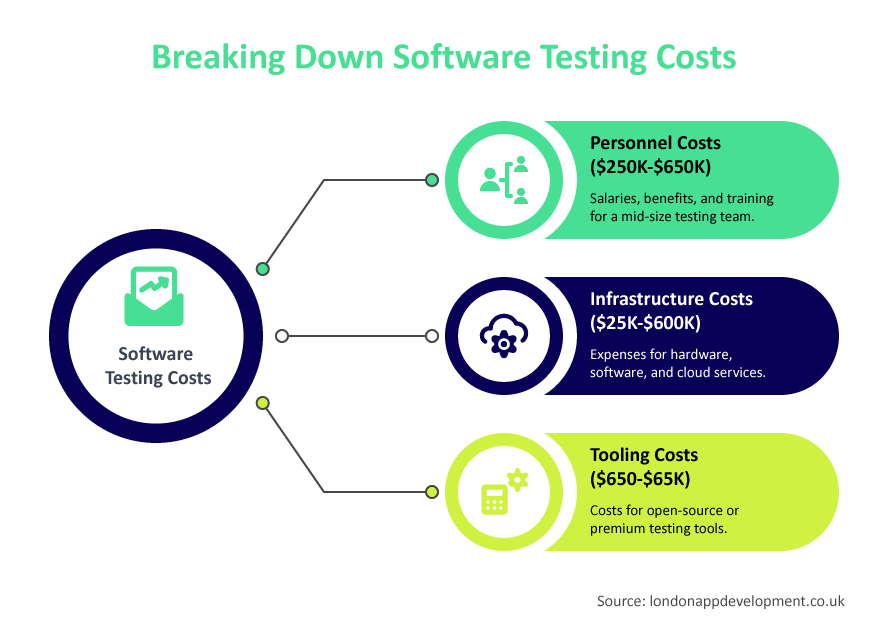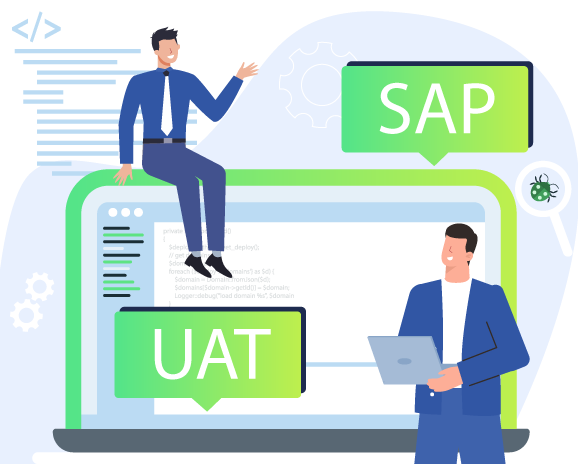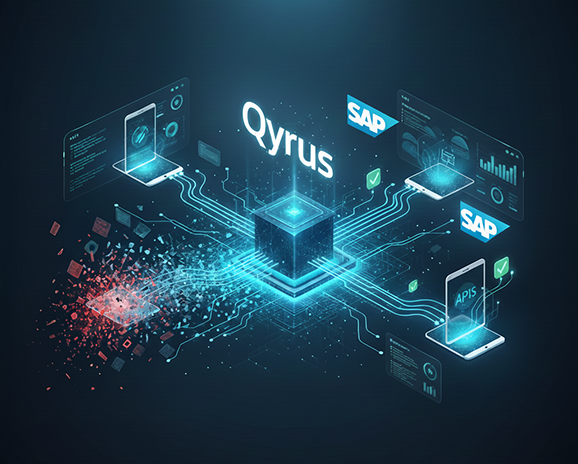How to Optimize Your Software Testing Costs with Infra Consolidation and AI


In today’s digital age, users expect software applications to work seamlessly across a multitude of devices and platforms. This expectation creates a significant challenge for software development teams: the increasing software testing costs and complexity of software testing infrastructure.
Historically, companies have tackled this by acquiring and maintaining a wide array of physical devices, virtual machines, and software licenses to mimic real-world user environments. Think of the stacks of devices, the rows of servers, and the sheer number of tools needed – it’s a lot! This traditional approach leads to a substantial financial burden and support from cross-functional teams to support. It includes the initial investment in hardware and software and the ongoing operational expenses like power, cooling, maintenance, and IT support.
To put this into perspective, ITConvergence reports that organizations typically spend between $10,000 and $50,000 on the initial setup of their testing infrastructure. But that’s just the beginning. According to London App Development, 25-35% of the total software development budget is spent on testing.
As technology advances and these costs continue to climb, businesses face a critical question: Are there smarter, more cost-effective ways to manage our software testing? Can strategies like infrastructure consolidation and the use of Artificial Intelligence provide a more viable and economical path to ensuring software quality and simultaneously reducing software testing costs?
Unveiling the Hidden Costs: The Pitfalls of Fragmented Test Infrastructure
Maintaining a fragmented test infrastructure can feel like navigating a minefield for software development organizations. It’s not just about the obvious expenses; it’s the hidden costs and inefficiencies that truly eat away at your resources. Let’s break down these pain points:
- The High Price of Entry: Setting up a fragmented test infrastructure demands significant upfront investment. You’re looking at acquiring a diverse range of testing environments – physical devices, virtual machines, various operating systems – the costs quickly add up. This initial outlay can strain budgets, especially for startups and smaller businesses. Cost estimation in software testing becomes crucial here, and a fragmented approach makes accurate estimation incredibly difficult.
- Operational Costs That Keep on Climbing: The spending doesn’t stop after the initial setup. Maintaining a fragmented infrastructure involves continuous expenses that can feel like a relentless drain. Think about hardware maintenance and upgrades, software licenses for a multitude of testing tools, the ever-increasing power consumption to run it all, and the large teams needed to manage and support this complex system.
- Complexity Overload: Trying to configure, maintain, and ensure consistency across numerous, separate testing environments is a huge challenge. Differences in setup, versions, and configurations can easily lead to errors and unreliable test results. Imagine the frustration of chasing bugs only to realize they were caused by an environmental inconsistency! This complexity makes reliable cost estimation in software testing a nightmare, as unexpected issues constantly arise.
- Scalability Challenges: Need to scale your testing efforts up or down? With a fragmented infrastructure, it’s a slow and painful process. Acquiring new hardware, provisioning environments, and getting them to play nicely with your existing systems takes time and effort, potentially delaying critical releases. This lack of agility directly impacts time to market and increases overall software testing costs.
- Integration Headaches: Fragmented infrastructures often involve a mix of testing tools and environments that simply don’t work well together. This leads to data silos, wasted effort, and a struggle to achieve a smooth, efficient testing workflow. End-to-end testing becomes particularly difficult, as different parts of the application struggle to communicate.
- Time-to-Market Erosion: All the challenges mentioned above – managing disparate environments, troubleshooting inconsistencies, and dealing with integration issues – contribute to a slower testing process. This ultimately delays software releases, preventing organizations from delivering new features and updates to customers quickly. In a fast-paced market, this delay translates directly into lost revenue and increased software testing costs.

The Consolidation Cure: Streamlining Your Testing Ecosystem for Cost Savings
Test infrastructure consolidation offers a powerful solution to the challenges we’ve discussed. It’s about moving towards a unified approach to software testing, leaving behind the fragmented chaos. The core idea is to reduce the number of separate tools and test environments, creating a streamlined and integrated ecosystem. This shift can unlock significant benefits and directly address the question of how to reduce the cost of software testing.
- Slash Licensing Costs: One of the most immediate and noticeable advantages of consolidation is the potential for significant reductions in software licensing expenses. By moving away from a multitude of individual tools, you can decrease the number of software licenses needed, leading to substantial savings on procurement and ongoing subscription fees. Platforms that offer a comprehensive suite of testing capabilities within a single environment are key to achieving these savings.
- Simplify Management and Maintenance: A consolidated testing ecosystem inherently simplifies management. Instead of grappling with a variety of tools, each with its own interface, update schedule, and compatibility requirements, your IT teams can focus on a single, unified platform like Qyrus. This streamlined approach reduces the administrative overhead associated with managing a diverse toolset, freeing up valuable IT resources and decreasing the workload on the teams responsible for maintaining the testing infrastructure. This directly translates to reduced operational costs.
- Enhance Integration and Efficiency: Consolidated platforms are designed with better integration in mind. When your testing tools exist within a unified ecosystem, they are more likely to offer seamless interoperability, resulting in more efficient workflows. This level of integration streamlines the testing process, enabling a better flow of information between different stages of the software development lifecycle and directly contributes to how to reduce the cost of software testing.
- Accelerated Time to Market: By addressing the challenges of fragmented infrastructure, consolidation contributes to a faster time to market. Streamlined workflows, reduced errors, and improved collaboration enable quicker testing cycles, allowing organizations to deliver new features and updates to customers more rapidly.
By embracing test infrastructure consolidation, organizations can move towards a more efficient, cost-effective, and manageable approach to software testing, ultimately leading to higher quality software and faster release cycles.
The AI Revolution: Intelligent Efficiency in Software Testing
Beyond consolidating your testing tools, Artificial Intelligence (AI) is a game-changer when it comes to reducing software testing costs. AI’s ability to analyze large datasets, identify patterns, and make smart decisions can be applied throughout the testing lifecycle, boosting efficiency and lowering operational costs. It’s about making testing smarter, not just faster.
AI is transforming tasks that traditionally demand significant manual effort:
- Intelligent Test Generation: AI algorithms can analyze software requirements, user stories, and existing systems to automatically generate test cases. This significantly reduces the time and resources testing teams spend on manual test design and creation, leading to faster test coverage and lower labor costs.
- Automated Test Maintenance: Software applications are constantly changing, which means test scripts need frequent, time-consuming manual updates. AI-powered tools can detect changes in the application (like modifications to the user interface or code) and automatically update the relevant test scripts. This greatly reduces the burden of manual test maintenance, ensuring tests remain effective and up to date.
- Smart Defect Analysis: When tests fail, it takes testers a long time to analyze the results, find the root cause of defects, and prioritize them for development teams. AI can help by identifying patterns in test failures, correlating issues, and prioritizing defects based on their severity and impact. This allows teams to focus their efforts and resources on the most critical issues, leading to faster resolution times and reduced costs associated with debugging.
- Predictive Analytics: By analyzing historical test data, such as past failure rates, defect trends, and code changes, AI can predict potential risk areas within the application. This enables testing teams to proactively focus their efforts on these high-risk areas, optimizing test coverage and potentially preventing costly defects from ever reaching production. According to London App Development, using predictive analytics in testing can reduce the time spent on defect fixing by up to 30%.
In essence, integrating AI into software testing empowers organizations to achieve greater efficiency, reduce manual effort, and ultimately lower the overall costs of ensuring software quality.
Qyrus: The Power of Consolidation for Cost-Effective Testing
Qyrus embodies the principles of test infrastructure consolidation by providing a comprehensive, codeless, and intelligent test automation platform designed for Web, Mobile, and API testing. This unified platform eliminates the need for multiple, specialized testing tools. By consolidating your testing activities within Qyrus, your organization can significantly reduce licensing costs and simplify the overall testing ecosystem.
Qyrus operates using an on-demand SaaS model with integrated browser and device farms. This is a crucial aspect of consolidation, as it removes the need for organizations to invest in and maintain their own extensive physical or virtual test infrastructure. This eliminates the overhead associated with hardware procurement, maintenance, and ongoing operational costs. Qyrus provides the necessary infrastructure on demand, enabling you to scale your testing efforts without the traditional burdens of infrastructure management.
As the Forrester Total Economic Impact study highlights, Qyrus’s strength lies in its ability to “build a scenario and string add-in components of all three [mobile, web, and API] to create an end-to-end scenario.” This further emphasizes Qyrus’s capability to unify different aspects of testing within a single platform.
Qyrus: AI-Driven Cost Reduction in Action
Qyrus harnesses the power of Artificial Intelligence (AI) to drive down the costs associated with software testing significantly. As an AI-infused platform, Qyrus incorporates intelligent capabilities across various aspects of the testing process, leading to increased efficiency and substantial cost savings.
One key area where Qyrus leverages AI is in test script maintenance.
Qyrus features Healer, an advanced AI-based tool that helps prevent test flakiness and brittleness. By recreating the base functionality of a script if it fails, Healer reduces the time spent investigating and fixing unreliable tests, ensuring that testing efforts are focused on genuine defects rather than test instability. Furthermore, Qyrus’s AI/ML-driven features assist in autocorrecting, self-navigating, and generating tests. By automating these traditionally manual tasks, Qyrus enables faster test creation and execution, saving valuable time and resources for testing teams.
The Forrester Total Economic Impact (TEI) study reveals several key benefits that directly translate to significant cost reductions:
- Significant cost avoidance from reduced downtime: This is partly due to Qyrus’s proactive AI detection, which reduces 50% of incidents that enter production.
- Time savings with regression testing automation: Qyrus enables the regression automation of around 90% of manual test cases, significantly reducing the need for manual regression testing.
- Productivity gains during UAT and reporting: Qyrus’s enhanced automation and user-friendly features reduce time spent on UAT testing by 20%, and its automated reporting capabilities save nearly two days of effort in generating regular reports.
- Time savings in resolving issues due to reduced production errors: Qyrus enables more automated and proactive identification of production errors, saving QA testers and developers time in managing fixes, and reduces incidents by about half.
By integrating AI throughout its platform, Qyrus empowers organizations to achieve substantial cost savings through reduced manual effort, improved test stability, and a decrease in production defects and downtime.
The Future of Testing: A Strategic Path to Cost Efficiency
The persistent challenge of high costs linked to traditional test infrastructure and manual processes continues to burden software development organizations. However, the rise of test infrastructure consolidation and the integration of Artificial Intelligence offer compelling ways to achieve substantial cost reduction.
Qyrus emerges as a powerful platform that effectively combines these two crucial approaches. As the demands on software testing continue to increase in complexity and the pressure to deliver high-quality software at speed intensifies, adopting a platform like Qyrus presents a compelling advantage. By embracing a unified, AI-driven approach, organizations can achieve more efficient, scalable, and significantly more cost-effective software testing practices, positioning themselves for success in the future of technology.
Want to reduce testing costs and improve quality? Try Qyrus now and experience the difference.






